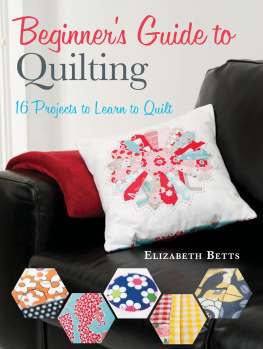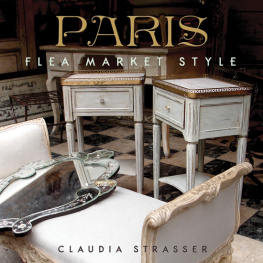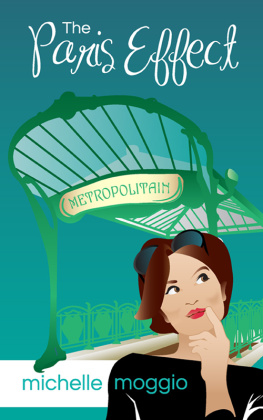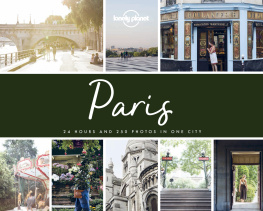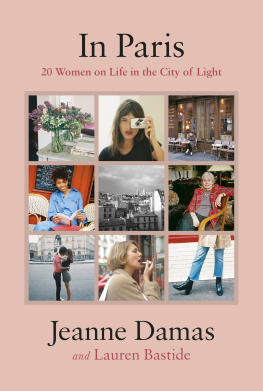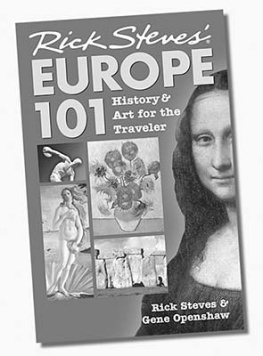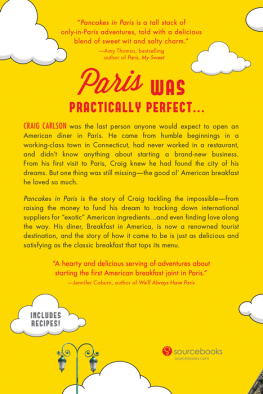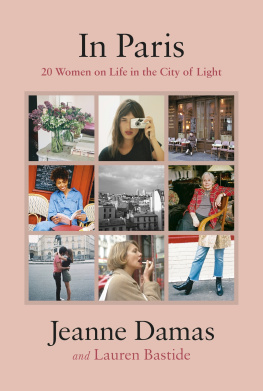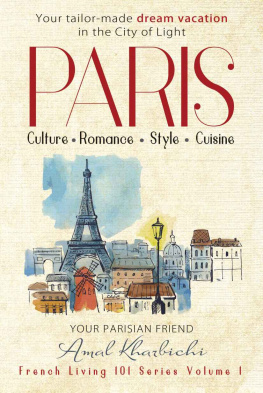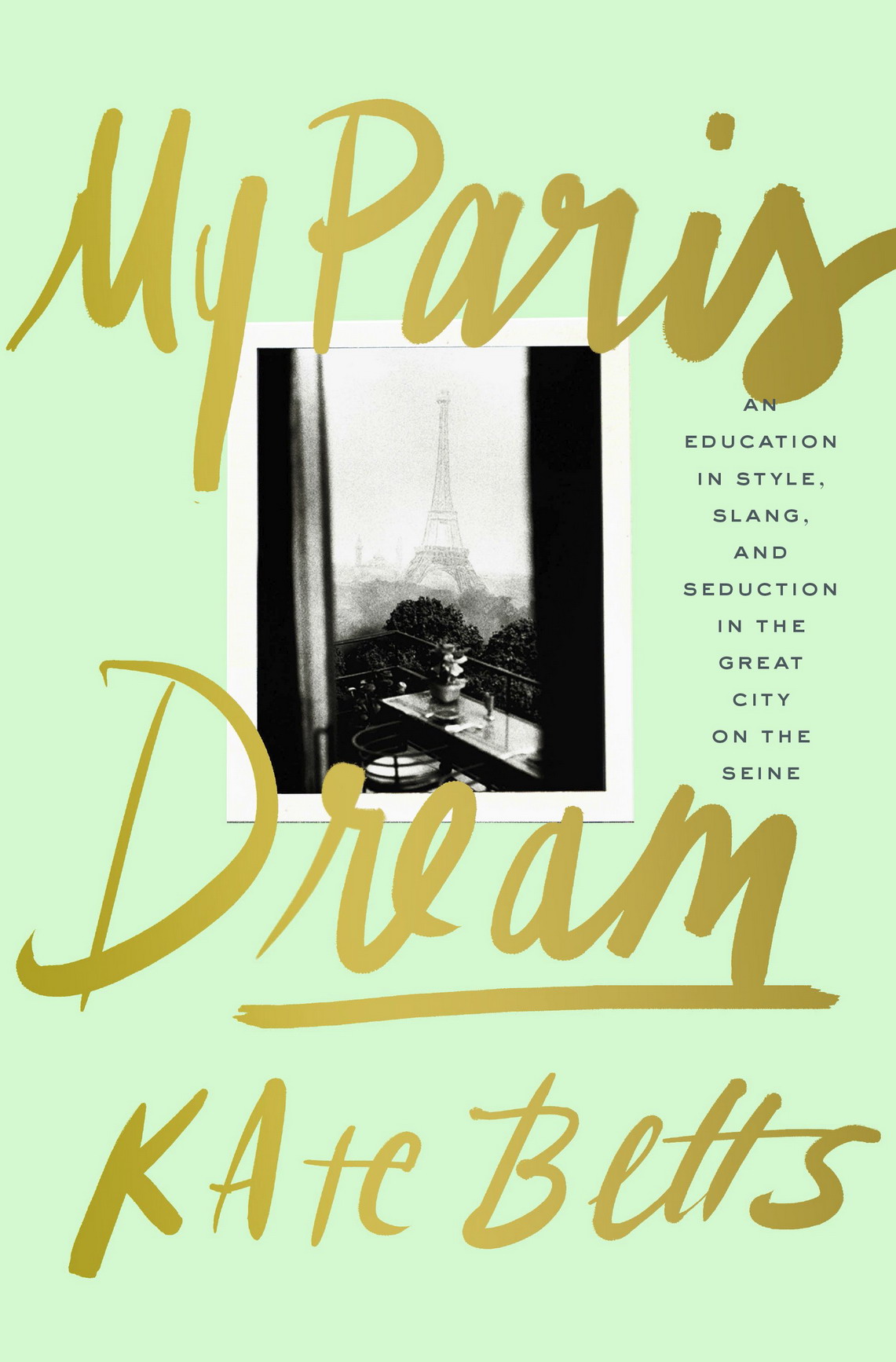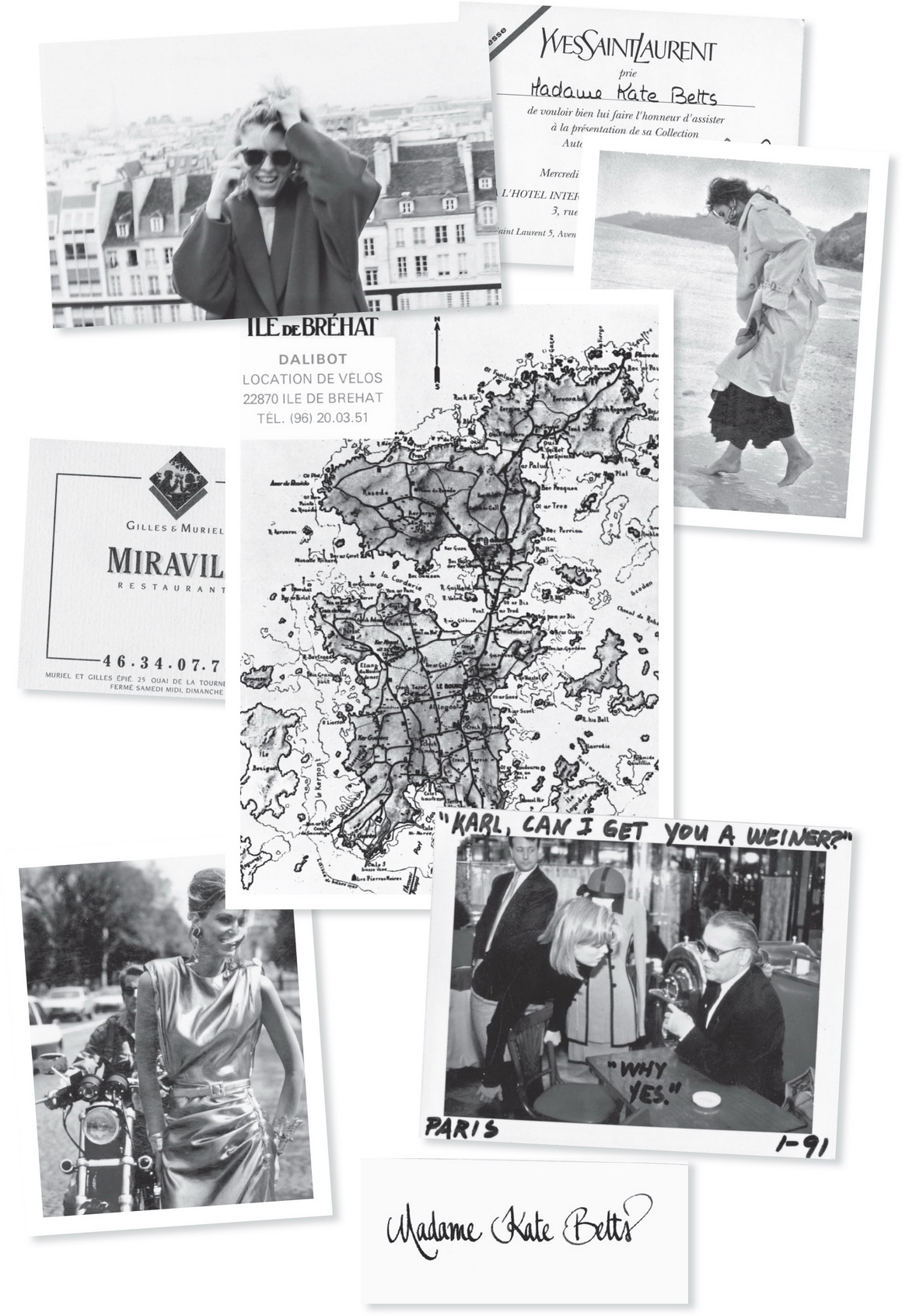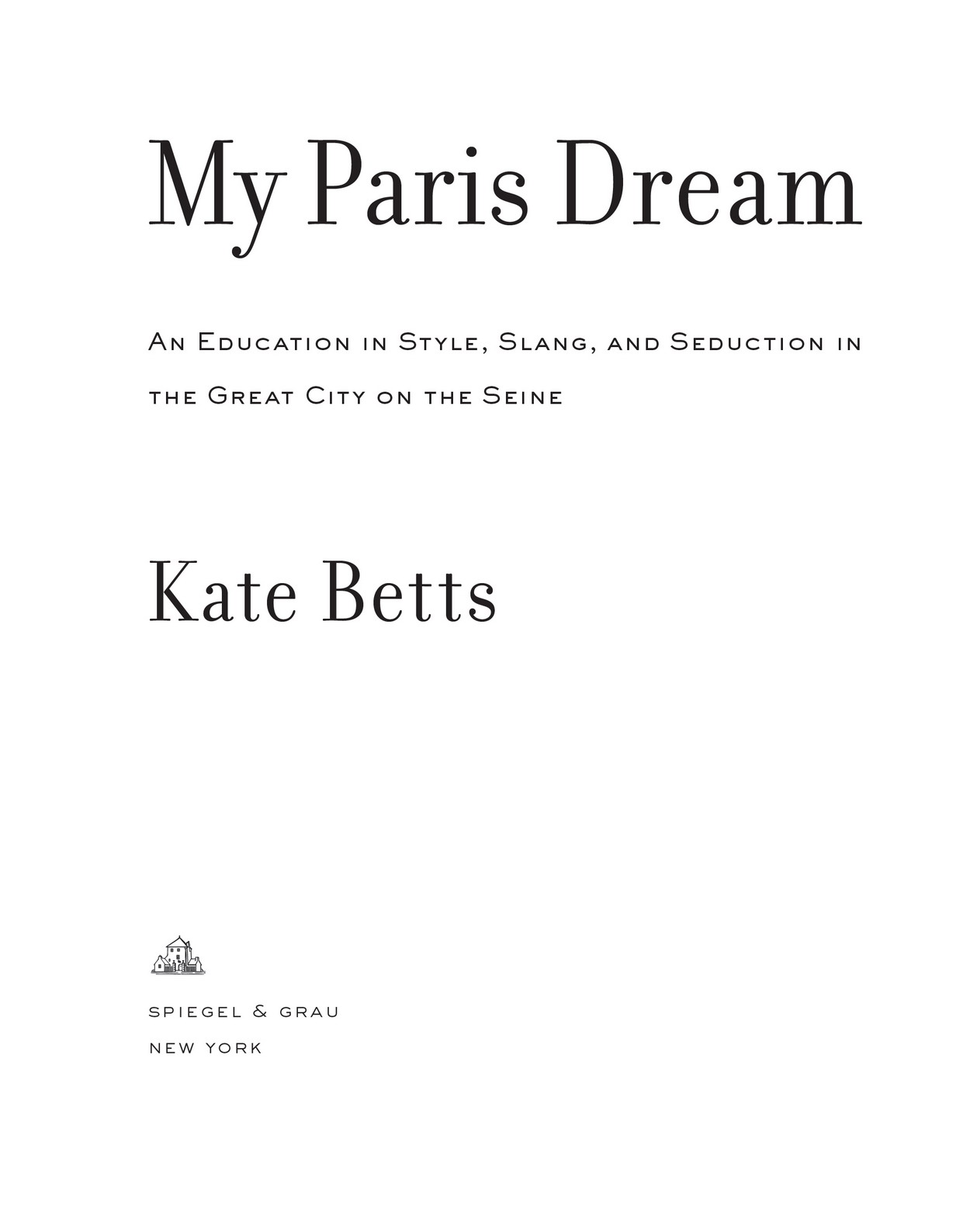Contents
My Paris Dream is a work of nonfiction. Nonetheless, the chronology of some events has been compressed. In addition, some of the names of the individuals involved have been changed. Any resulting resemblance to persons living or dead is entirely coincidental and unintentional.
Copyright 2015 by Katherine Betts
All rights reserved.
Published in the United States by Spiegel & Grau, an imprint of Random House, a division of Penguin Random House LLC, New York.
S PIEGEL & G RAU and the H OUSE colophon are registered trademarks of Penguin Random House LLC.
Grateful acknowledgment is made to Hal Leonard MGB s.r.l. for permission to reprint a lyric excerpt from Douce France by Charles Trenet, copyright 1943 Editions Salabert-Paris. All rights reserved. Reprinted by kind permission of Hal Leonard MGB s.r.l.
Library of Congress Cataloging-in-Publication Data
Betts, Kate.
My Paris dream: an education in style, slang, and seduction in the great city on the Seine / Kate Betts.
pages cm
ISBN 978-0-679-64442-2
eBook ISBN 978-0-679-64443-9
1. Betts, Kate. 2. Betts, KateHomes and hauntsFranceParis. 3. Young womenFranceParisBiography. 4. AmericansFranceParisBiography.
5. Women journalistsFranceParisBiography. 6. FashionFranceParisHistory20th century. 7. Fashion designersFranceParisHistory20th century.
8. Paris (France)Social life and customs20th century. 9. Paris (France)Biography. 10. Coming of ageFranceParis. I. Title.
DC705.B48A3 2015
944.361092dc23 2014040620
[B]
eBook ISBN9780679644439
www.spiegelandgrau.com
eBook design adapted from printed book design by Caroline Cunningham
Cover design: Ben Wiseman
Art direction: Greg Mollica
Cover photograph: Millennium Images
v4.1_r1
a
Ones destination is never a place, but a new way of seeing things.
H ENRY M ILLER
CONTENTS
CHAPTER ONE
Seeds of the Dream
I n the summer of 1982 I discovered Paris for the first time. I was on a high school graduation adventure with my boarding school roommate, Maria, and her sister Johanna. We bought Eurail passes and spent two months traveling around France, Italy, Germany, and Czechoslovakia. We arrived in Paris on a hot June morning, bunked in a youth hostel on the rue des Barres behind the Htel de Ville, and made a beeline for Berthillon, the ice cream parlor on the le Saint-Louis that Johannas worldly older boyfriend had told her had the best ice cream in the world. It was true. I still remember the intense flavor of the side-by-side scoops of raspberry and lemon-lime sorbet. Everything about Paris was more intense, from the sorbet flavors to the cornflower-blue sky stretched over the sharp spire of Sainte-Chapelle to the scarlet poppies poking out of green grass squares in the Luxembourg Gardens to the acrid smell of urine in the long, white-tiled Mtro corridors.
For two weeks we walked and walked, restlessly roaming from Right Bank to Left, through lush displays of dahlias and roses in the le de la Cit flower market, past the stout Gothic turrets of the Conciergerie, and over the Pont Neuf to the boulevard Saint-Michel. We walked from the Jardin des Plantes to the Eiffel Tower and then crossed the Seine again on the Pont de lAlma, taking in the golden shadows of Paris at dusk. Every streetscape and boulevard seemed to shimmer in the heat and summer light like an Impressionist tableau. We visited the Louvre, Notre Dame, and Sacr-Cur. We rolled down the grassy hillside of the Parc des Buttes-Chaumont and ate buttered baguettes with thick slabs of boiled ham. In the evening we counted out chunky ten-franc coins and splurged on steak au poivre and cheap Beaujolais at Aux Charpentiers.


Something about the majestic landscape moved me in ways I didnt quite understand: the shock of history. Everywhere I looked, the past was present. On the sides of the limestone buildings, brass plaques memorialized fallen soldiers and members of the French Resistance. The parks, the broad, slick paving stones on the boulevards, even the light had been immortalized by the Impressionist painters. So much texture and flavor! Twenty kinds of bread were splayed out in bakery windows; boisterous cafs spilled over with students, professors, prostitutes, and ouvriers, workers in their cobalt-blue jumpsuits.
When the summer ended, I headed off for my freshman year at Princeton and was immersed in an all-American preppy campus that was a world apart from the bohemian Paris that had moved me to my soul. Within a few weeks, I fell in love with a sophomore named Will who, like me, had grown up in the prep school tradition of the East Coast. Will was confident about his place at Princeton, not intimidated by ambitious classmates or the grind for grades. He laughed at me for trying to read every book on every syllabus, for rushing over to Firestone Library after dinner. On weekends wed go to drunken parties in the basements of eating clubs like Cap and Gown or the Tiger Inn, where masses of people would dance to one-hit wonders. Everybodywants to rule the world, we sang along, punching the air with our hands and skidding around the beer-soaked tile floor in our acid-washed jeans and Laura Ashley blouses. Yeah, we were gonna rule the world, at least until 2:00 A.M ., when many of the party animals were vomiting in the gutter.
I was interested in fashion, and that made me a bit of an anomaly on campus. Style was part of my upbringing. New York in the seventies was defined by larger-than-life style icons like Bianca Jagger, Halston, Diane von Furstenberg, and Andy Warhol.
My mother and father had divorced when I was six. I was never sure why exactlywe didnt talk about itbut I remember a kid pointing at me in second grade and whispering to her friend, Her parents are divorced. In those days, at that school, divorce was rare. A few years later my mother moved my sister, my brother, and me into an apartment on East 63rd Street just off Park Avenue, across the street from Halston. Warhol lived two blocks up; my brother and I would see him with Liza Minnelli in the butcher on Lexington Avenue. We stayed with my dad every other weekend and on Wednesday nights. He was an architect and had a strict aesthetic inspired by Le Corbusier, Louis Kahn, and the Color Field painters of the 1950s. His apartment, across the street from the Museum of Modern Art, was all white, with recessed lighting and the latest Eames chairs. He was passionate about art and architecture and would take us on excursions to the Museum of Modern Art or to SoHo and would talk endlessly about painters like Frank Stella and Franz Kline and the art scene in the sixties. He loved to tell the story of a trip to Paris as a newlywed, when my mother dragged him to a concert. It was dith Piafs last. You never know, he would say, what you might learn or see. He was strict and aloof in a way that my mother was not, but he cared about educationcultural education. You are barbarians! he would say when my brother and I complained about yet another museum.




